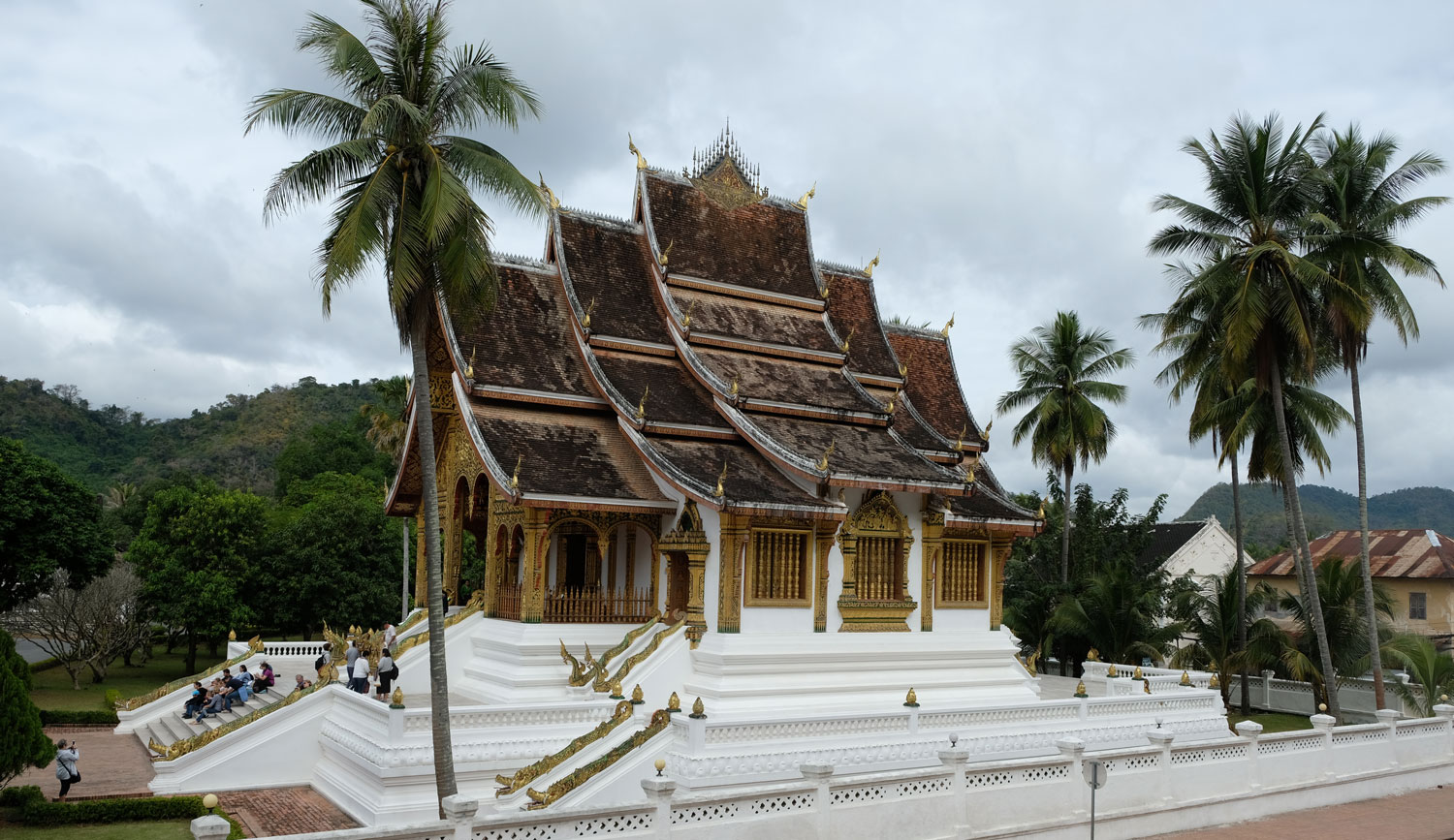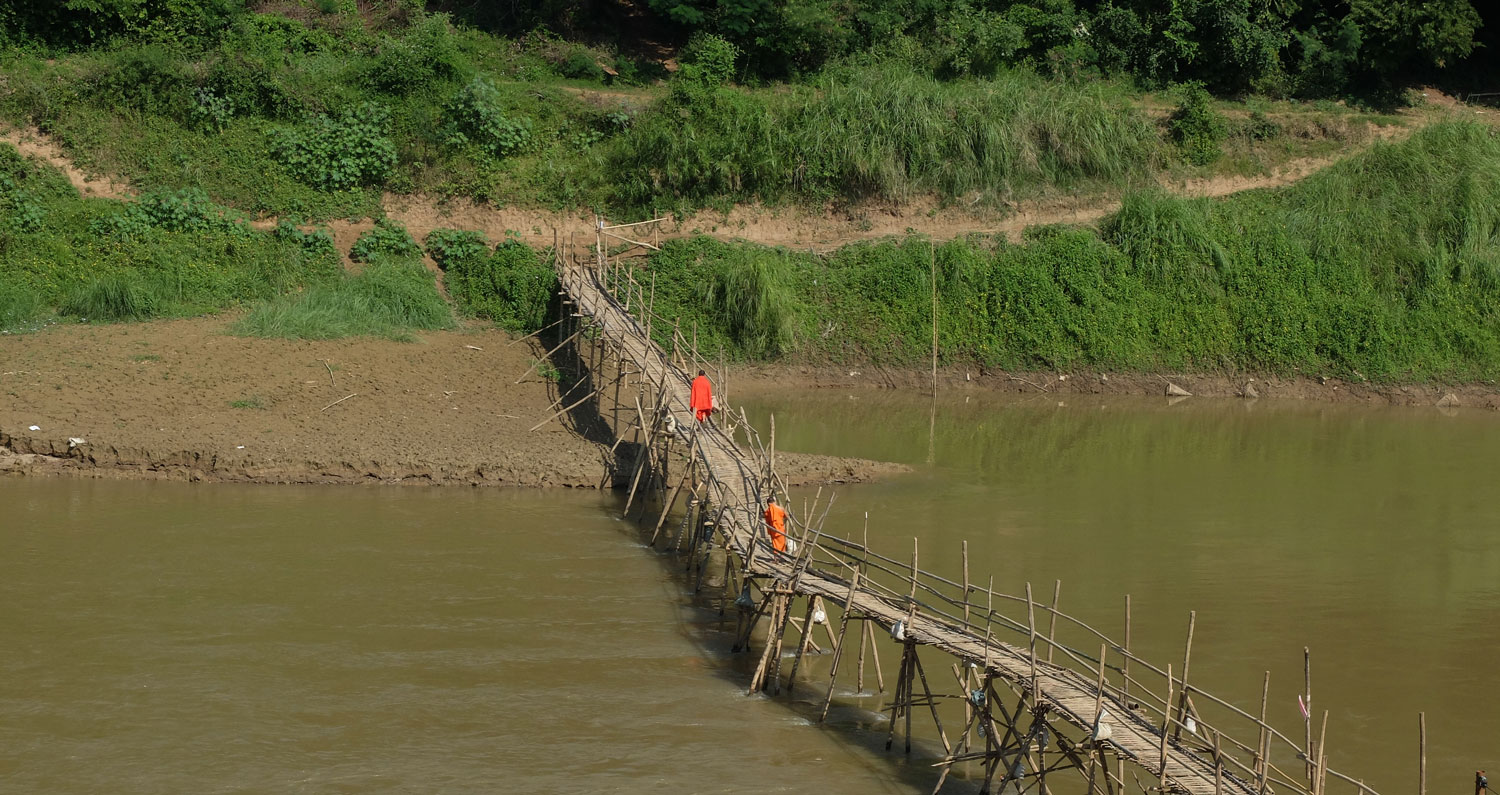Go before it’s too late
Visiting the World Heritage Town of Luang Prabang
When the ancient Lao capital of Luang Prabang very rightly was given a UNESCO World Heritage recognition in 1995, the picturesque town also lost its virginity. With that status, it was no longer a hidden gem along the Mekong river but a place with a commercial tourist potential. And the tourism business definitely gathered momentum.
My first visit to Laos and Luang Prabang was back in December 1990 when hardly anyone visited the country. Access was by boat across the Mekong from Nong Khai in neighbouring Thailand, and visas were only available from the embassy in Bangkok. If travelling off the beaten track with the sense that Kilroy was never there is what you are looking for, Luang Prabang was definitely the place in the early nineties.
This was long before the Friendship bridge was completed, and whatever friendship there was to be made, one had to cross the river first. All day, except during lunch break, boats were plying back and forth across the Mekong, bringing people, merchandise and the odd tourist across to the People’s Paradise. In Vientiane those days, Aeroflot still kept an office and their Iluyshin jets connected the capital to Moscow. At the Anou hotel, people danced the night away to a Russian band playing sixties music, very often out of tune. “Those were the days,” as Mary Hopkins sang.
Back then, Luang Prabang – and indeed the whole country – seemed suspended in time, a place where news was scarce and where reliable roads were few and far between. It was by no means an easy place to get to then, but worth the hassles if you were fascinated by old Buddhist Wats, picturesque settings, and friendly people. Plus, there were not that many other strangers roaming the streets. After my last visit in December 2017, I can say it is different now, but it’s still a very pleasant and quiet little place – worth visiting, especially if you want to get away from the party crowd.
But for how long? If you want to go, do so before the Chinese-built Shinkansen train from China through Laos to Bangkok is completed. A station in the outskirts of Luang Prabang is on the drawing board. In fact, I believe the drilling through the mountains in the north has already started. While Laos had a meagre 7,000 visitors in 1990 – in 2018 five million are expected. And still counting, I would imagine.
Lao culture is still intensely influenced by Buddhist thinking, attitudes, and behaviour. It is very difficult to understand Lao culture without having at least a basic understanding of the Hinayana Buddhist tradition, which came to the country from Cambodia around 500 years ago.
Every morning, long before the sun beams through the thick mist, the Buddhist monks in their typical orange robes come down the street in military precision. With the small copper bowls resting on their hips, they are out on their daily tour of collecting their meals. Along the the streets, women line up, and with respect and admiration fill the monks’ bowls with hot, sticky rice.
It is expected from any young Buddhist man in Laos to spend some time in a monastery as a novice monk, preferably before his marriage. Because of that, there is a strong monastic life all over the country. The monks receive their food in the morning from the population, and then are not supposed to eat for the rest of the day, although rules are rarely observed rigidly. Those who feed them accrue some merit. Each morning, at the break of dawn, it is an impressive sight to see the Buddhist monks from all the temples walking the streets, elders first, receiving their alms from the devout locals.
So, what else is there to see in Luang Prabang? Wats, wats, and wats. National museum and the Phou Si hill. Its importance as a religious and cultural centre come from the more than thirty active temples. There are also a few waterfalls, and upriver the Pak Ou caves can be reached by boat with a stopover in a small village to see how moonshine is made. The most exciting experience is of course to get up at the crack of dawn to watch the monks parading the streets for their morning alms. Very popular, and at 6:30 in the morning Sakkaline Road is lined with minivans and selfie conscious, camera clicking Chinese tourists. Then there are river cruises and ferries across the river and by hiking a bit, you'll find yourself in totally unspoiled villages.
Luang Prabang is a small town of around 20,000 souls, in a pleasant site on a kilometre-long peninsula nestled among high hills – or mountains if you like – at the confluence of the Nam Khan and Mekong rivers. The legendary river Mekong (meaning mother of the rivers) is part of the national culture like the Yang-Tse-Kiang (in China) and the Ganges (in India). It also rises in the Himalayas. The Mekong has been the cradle of many civilizations, and even today it continues to be an essential part of communication and transportation. Life on the Mekong river is relaxing, cool, and full of poetry. The Laotian himself is a type of water king who glides across the river in his tiny canoe casting his fishing net while his wife cultivates a kitchen garden on the fertile banks. In the evening, the aroma of boiled fish wafts through the air from the little thatched huts.
Somnambulant and languid, the peaceful feel of Luang Prabang masks a fascinating history of conquest and recapture, and only hints at the intricate culture and complex traditions that take place here every day. In the middle of the town, surrounded by a park and a majestic fence, you will find the Palace. The King’s Palace. Facing Mount Phou Si and a sacred monastery. The palace is built in French style and drawn by French architects, made ready for the inauguration of King Sisavangvong in 1904. It is now a national museum. The palace (museum) sightseeing is completed in less than an hour, and I was most impressed by President Richard Nixon’s gift to the Laotian people: a plate of dust from the moon. And His Majesty Sisavangvong and his wife’s toilet. Français. Tres français.
With an outstanding range of restaurants, guesthouses and hotels, a stunningly beautiful location and super friendly people, Luang Prabang has a frequent habit of putting paid to tightly planned itineraries -- be sure to allow at least a few days to really take this wonderful town in.
Luang Prabang despite its important past as the ancient royal capital, is still a charming small town. The town is one of the most preserved of South East Asia and all the sights are well within strolling distance. Sleepy much of the year, Luang Prabang bursts with life during the Lao new year celebrations of Pimai Lao. If you're planning on visiting at that time of the year, be sure to book a room well in advance.
Another option of getting to know Laos is to travel down the Mekong river to Luang Prabang from Huay Xay close to the Golden Triangle. The upper part of the river has a character very different from the one better known in its Vietnamese delta. Here it is still narrow with rapids, and the water flows between luxuriant mountainous landscapes. On the way, you see small villages and hamlets which can be reached only by the river, where tourists are seen so little that they are still an object of curiosity. On the slow boat, which takes two to three days, you share the ride at the rhythm of the river together with other backpackers and if lucky – with colourful local people. The fast boat, however, is not for those easily scared. It skirts the rapids at more than 50mph, making the trip in less than half a day.
[January 2018]





